When it comes to working out, yoga and strength training may seem like opposites, but in truth they compliment each other perfectly. Having a combined yoga and strength training routine not only helps build your physique, but can also give you the mobility required to better perform when doing lifting exercises or resistance training. It can even help slow the rate of bone loss as you age; reducing the risk of fractures.
Yoga is a great way to build strength, body awareness, and muscle activation, which are all beneficial when it comes to weight lifting. As a standalone exercise, yoga has a host of benefits (which we will get into below). But when paired with strength training, you will be taking more care of your body and reducing the risk of injury. If strength training is a big part of your normal routine, incorporating yoga can improve your performance and mobility. If you’re concerned about being able to hit the gym regularly, yoga will help your body keep safe and injury-free so you can do that.
In this blog, we’ll cover:
- The benefits of Yoga and Strength Training
- Incorporating Yoga as a warm up to strength training
- Incorporating Yoga as a cool down to strength training
- Creating a Realistic Yoga and Strength Training Routine
- How Much Exercise is Enough Exercise
The Benefits of Yoga and Strength Training
Yoga and strength training both have their benefits and strong points. One isn’t necessarily better than the other, but when put together, they’re perfect counterparts. Yoga makes you a better lifter, and lifting improves your practice of yoga. Now, let’s go over the basic benefits of each type of workout.
Yoga has major benefits for male fitness. It’s often thought of as an exercise that can simply improve your flexibility, but that’s not the only area where it can be beneficial. Yoga can enhance your workouts and boost your performance by giving you better range of motion. A better range of motion leads to being able to activate more muscles, which in turn will help with your workout’s effectiveness.
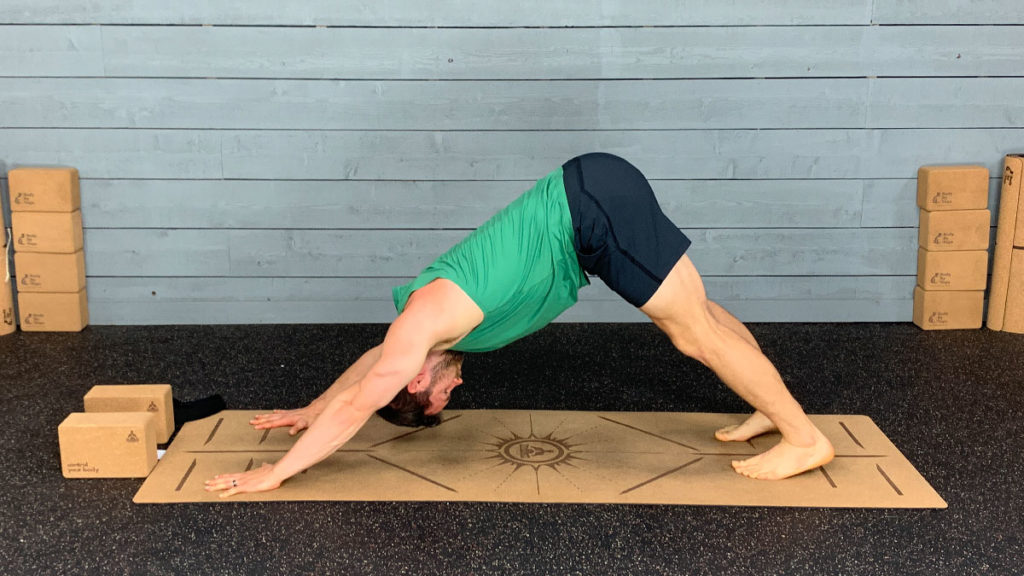
Yoga gives you a solid foundation for building strength, mobility and flexibility, and strengthening connective tissue. Depending on your overall goal for your workout, you can change the level of intensity you give to it. If you’re still a beginner to yoga, start with this video for a full body yoga workout, no flexibility required.
If you’ve been focused mainly on yoga or cardio for your workouts, strength training might be a little intimidating. While yoga is great for building your muscles using your own body weight, you aren’t going to build a hugely significant amount with only that as your main exercise. When it comes to making a transformation to your body and really seeing significant changes in your muscles, you’re going to have to do strength training. From a fitness standpoint, strength training builds your muscles, which in turn burns more fat by increasing the amount of calories that you burn while you’re at rest. Outside of fitness, it can also help you build your confidence and improve your mental health.
Having a combined yoga and strength training routine can give you all of these benefits and as you get better at one, you’ll get better at the other.
For example:
- By strength training you can work on your back muscles and correct muscular imbalances that cause shoulder pain which are common in those that only practice yoga.
- With yoga, you can increase your mobility. This won’t only help you with strength training exercises by helping you improve your overall range of motion, you can build more overall strength and further strengthen your joints. This also ensures you reduce your risk of injury.
Incorporating Yoga as a Warm Up to Strength Training
One way to incorporate both exercises together into a yoga and strength training routine is by using yoga as your warm up to strength training. The best way to do this is to ensure your yoga practice for warm ups focuses on active mobility instead of passive flexibility. While flexibility can be part of mobility, they are two different things.
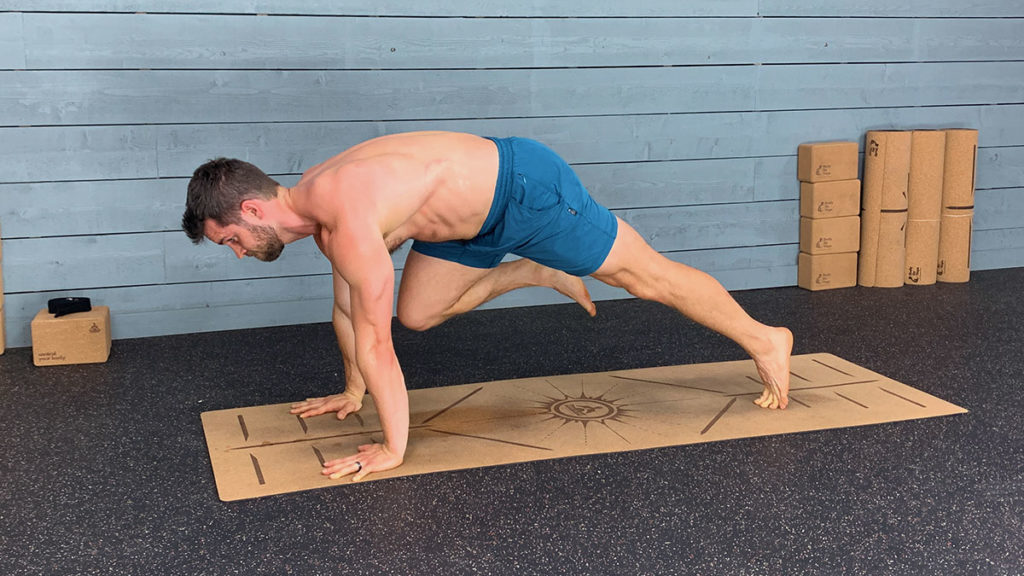
Focusing on active mobility and muscle activation within your yoga warm up, allows you to reduce your risk of injury when strength training and correct muscle imbalances caused by muscle tightness. Some of the poses you can do include high lunge, tree pose, cobra, plank, and boat.
If choosing to do yoga to warm up, it’s important to focus on having short hold times. A hold time refers to how long you would hold a yoga pose and is counted in breaths. A short hold time, for example, would be about 3 breaths. 3 breaths should be between 3 – 5 second long inhales and exhales, totaling 6 – 10 seconds. Choose poses that will help introduce movement into your body and start activating your muscles. This is important, as transitioning to a hard strength training workout without the warmup can increase your chances of injury and decrease your performance. You will likely have lower overall reps, lower rep quality, and more discomfort.
Be sure to avoid any type of passive stretching or relaxed, restorative stretching before a workout. The longer hold times that come along with these poses are best used if doing a yoga practice on it’s own, or as a cool down from your other exercise.
Incorporating Yoga to Cool Down After Strength Training
Another way you can incorporate yoga into your strength training routine is as a cool-down. Cooling down after a high-intensity or strenuous workout with low-impact exercise will help your body and heart rate slow down gradually. Professional cyclists do this, riding stationary bikes after long Tour deFrance stages. You may want to rest immediately after a hard effort, but cooling down first eases you out of that intense zone. You want to get out of an intense zone so you can relieve muscle tightness, activate the parasympathetic nervous system, and help jumpstart the recovery process.
When you incorporate yoga as your cool down, you want to ensure that none of the poses you do are too challenging or focused on strength building. Instead, it should be focused on passive stretching, yin yoga, and be more restorative in nature. You want to do deep stretches that relax your body and bring healing to those muscles.
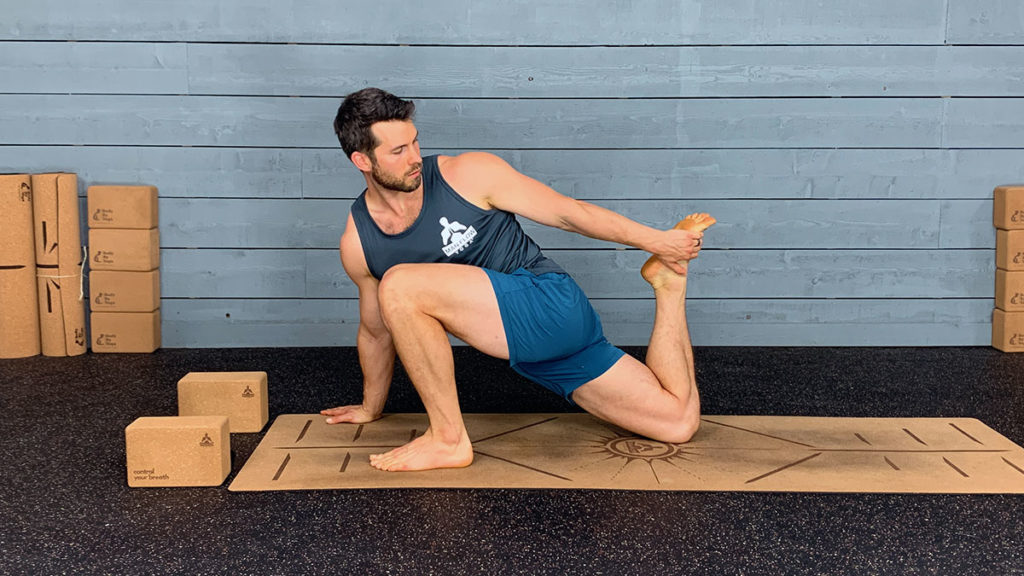
If you do happen to feel some soreness or stiffness after strength training, at any point after leaving the gym, yoga can help with relieving some of that pain and tension, and decrease your risk of injury from overtraining.
While short hold times are important for warm ups, you want to do longer hold times for your cool down. You will want to hold poses for 45 – 60 seconds to start and potentially increase time depending on the pose. A cool down doesn’t have to be a significant amount of time, as just 10 minutes can help bring you the benefits of restorative yoga. To see how to do these poses and more, follow along on YouTube with this free cool down routine.
Creating a Realistic Yoga and Strength Training Routine
We know that yoga is great when paired with strength training but it can also be beneficial as a standalone part to your weekly workout routine. If you enjoy doing yoga as a full workout within itself, it’s best to not stack directly next to strength training. In this case, you can alternate the days you do each exercise.
For example, if you’re someone who likes to work out 6 days a week with 1 day of rest, you can alternate days. Day 1 strength training, Day 2 yoga and so on. This would allow for both strength training and yoga 3 times per week.
Sample Schedule:
| Sunday | Monday | Tuesday | Wednesday | Thursday | Friday | Saturday |
| Rest Day | Strength Training | Yoga | Strength Training | Yoga | Strength Training | Yoga |
Same Day Workout Splits
Some may ask if it’s possible and safe to do both a full strength training and yoga workout during the same day. The answer is both yes and no. It’s a misconception that you should only do one type of workout or exercise per day while giving another muscle group a break.
While yes, it’s important to not over-exercise your muscles as that would lead to overtraining injuries and make it harder to stick to a consistent workout schedule, you can do both workouts on the same day if you space them apart and give your body a much needed break in between.
For example, if you’re someone who prefers to work out twice a day and wants to incorporate full workouts of yoga, strength training, and cardio, it’s best to do one of them in the morning and one in the afternoon or evening. This will give your body more of a break it needs in between workouts to recuperate, and it will help prevent injury.
Sample Schedule:
| Sunday | Monday | Tuesday | Wednesday | Thursday | Friday | Saturday | |
| Morning | Strength Training | Cardio | Strength Training | Strength Training | Cardio | ||
| Afternoon | Rest | Rest | |||||
| Night | Yoga | Yoga | Yoga | Yoga | Yoga |
Creating a yoga and strength training routine doesn’t have to be anything complicated or overwhelming. When figuring out a schedule that works best for you, you want to ensure that it’s realistic. By realistic, I mean ensuring that you can incorporate it into your life without too much disruption. While it’s easy to have good intentions and want to go all in right away, especially when you’re first starting out, doing too much too fast can easily backfire. It can cause you to burn out, overtrain, or give up. Easing into a new schedule is best for ultimate success.
How Much Exercise is Enough Exercise
When you’re starting out with a new routine, there’s a balance to reach. You want to make sure it’s realistic for you, and stay away from over or undertraining. So how long should you be doing strength training and yoga, in order to maximize benefits of both workouts?
If you’re simply focusing on strength training for the day, you should strive to hit between 30 – 45 minutes per session. This is not including a warmup and cool down of 10 minutes each. If you’re focusing on yoga for the day, strive to do 30 minutes. You can increase this up to 60 minutes as your fitness level improves, and if it’s part of your overall goal.
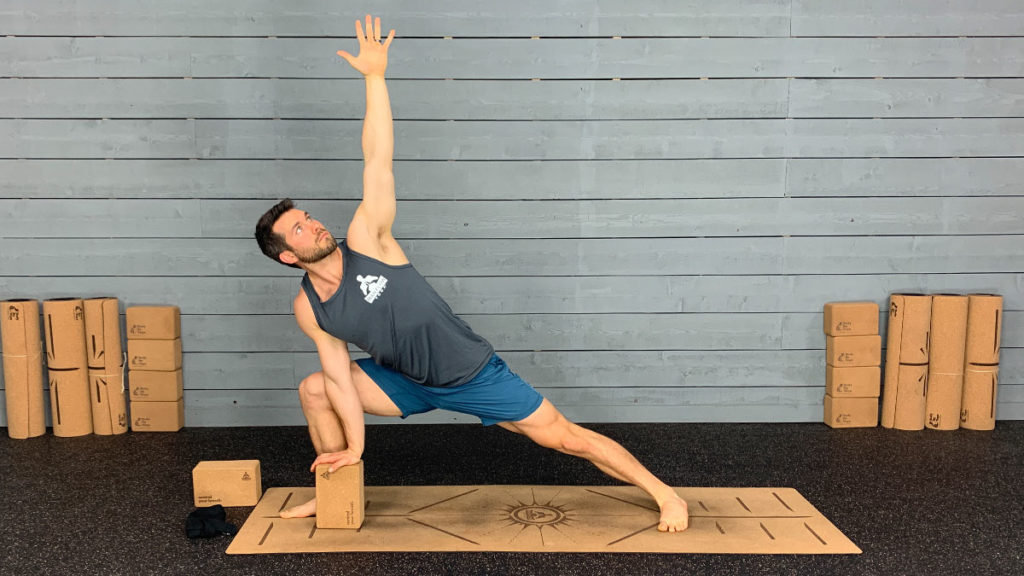
When you combine strength training and yoga into the same workout on the same day, you may want to do 45 minutes of strength training in the morning, with a few stretches throughout your day or 10 to 15 minutes of yoga at night. The perfect schedule is ultimately up to you and what you can handle safely. It is important to ensure that you’re not overtraining or undertraining. Listen to and respect what your body is telling you.
Overtraining Vs. Undertraining
Overtraining can happen when you work out past your body’s capacity to do it safely. You’ll know if you are overtraining by paying attention to how you feel when you’re not working out. Are you feeling exhausted, moody, or restless? Is pain from a past injury starting to flare up again? If so, you are likely overtraining. Our bodies need rest days in order to operate to the best of their abilities and to recuperate from tough workouts.
If you’re feeling bored with your workouts and notice a plateau in progress towards your goals, perhaps you’re undertraining. Undertraining can happen when you simply go through the motions and are not increasing the difficulty of your workouts. Our bodies can easily adapt after just a few months, so it’s important to change things up with your routine as necessary. Change it up with adding different exercises, increasing weight, or doing more high intensity workouts.
Creating a good yoga and strength training routine requires you to be realistic and find that balance between working out hard enough that you’re challenging yourself, but not so hard that it’s causing issues with your body.
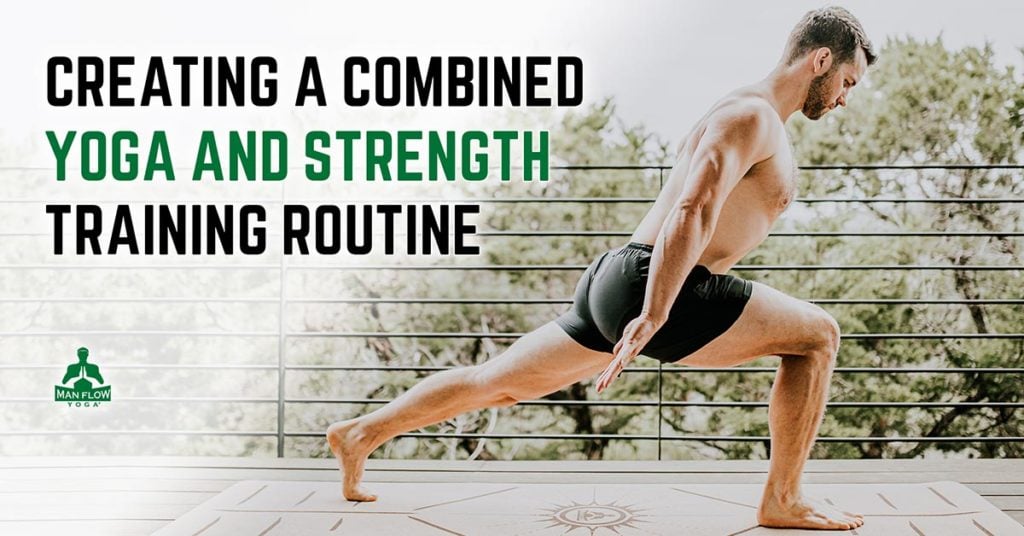
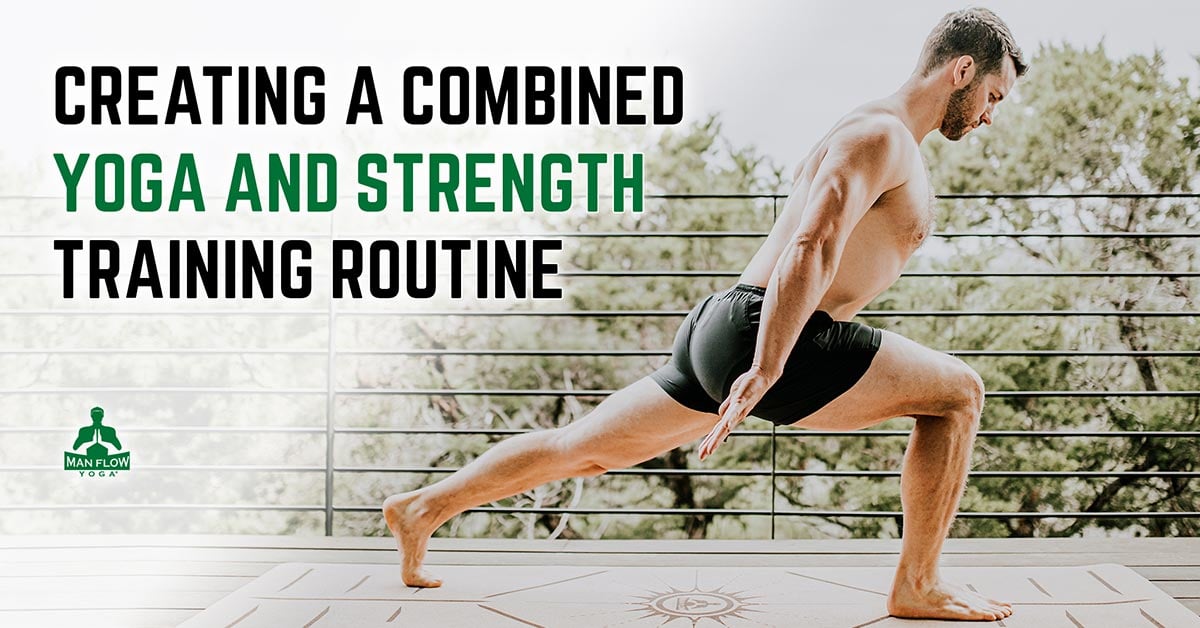
I actually intersperse yoga stretches between sets or exercise groups from time to time. Seems to work well for me. Also use it as a warmup for basketball and tennis.
Thank you for the input Dewell! We always recommend combining yoge with other forms of exercise for that exact reason, everything benefits.